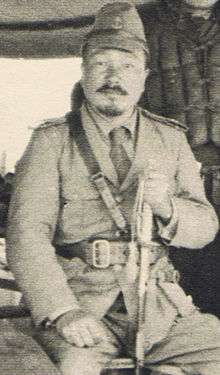Yasuna Kozono
Yasuna Kozono (小園 安名, Kozono Yasuna, November 1, 1902 – November 5, 1960) was a World War II Imperial Japanese Navy officer.
Yasuna Kozono | |
|---|---|
 | |
| Born | 1 November 1902 Mansei-cho (now Minamisatsuma city), Kagoshima prefecture, Japan |
| Died | 5 November 1960 (aged 58) |
| Allegiance | |
| Service/ | |
| Rank | Captain (海軍大佐剥奪) |
| Battles/wars | World War II |
Early life and education
He was born in Kagoshima prefecture in Mansei city (now Minamisatuma city). He graduated from Tachikawa junior high school and entered the Japanese Naval Academy on August 26, 1920, graduating on July 14, 1923.
In Rabaul
When he was the commander of a unit in Rabaul on New Britain he suggested modifying the Nakajima J1N as a night fighter, which was successful against B-24s and B-17s, although less so against B-29s.[1]
1945
He was in command of Atsugi Aerodrome during the latter part of the Second World War, and initially refused to surrender. They printed leaflets and dropped them over the Kanto area calling for the war to be continued "to the end". Finally, 33 pilots left the base, and Douglas MacArthur arrived there on August 30.[2][3]
Kozono was weakened by malaria and was arrested by the Japanese Navy. He was then taken to court martial, stripped of rank, and sentenced to life imprisonment. He was released on parole in 1950 and was pardoned in 1952. He ended his life as a farmer after release.
References
- Nakajima J1N Gekko (Moonlight) 'Irving' Retrieved August 11, 2016
- NAF Atsugi - History Retrieved August 11, 2016
- JMSDF Base Histories - Atsugi Retrieved August 11, 2016